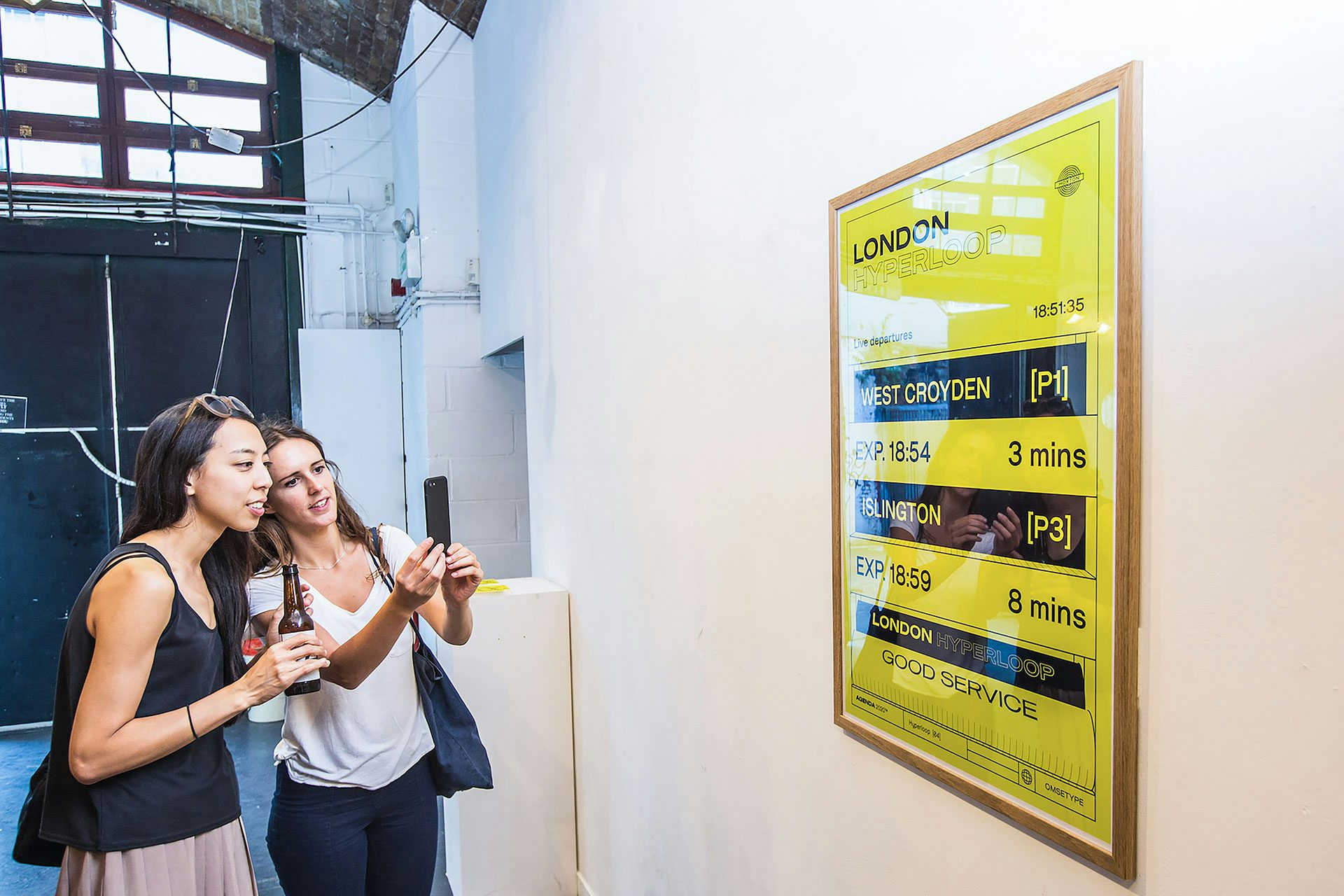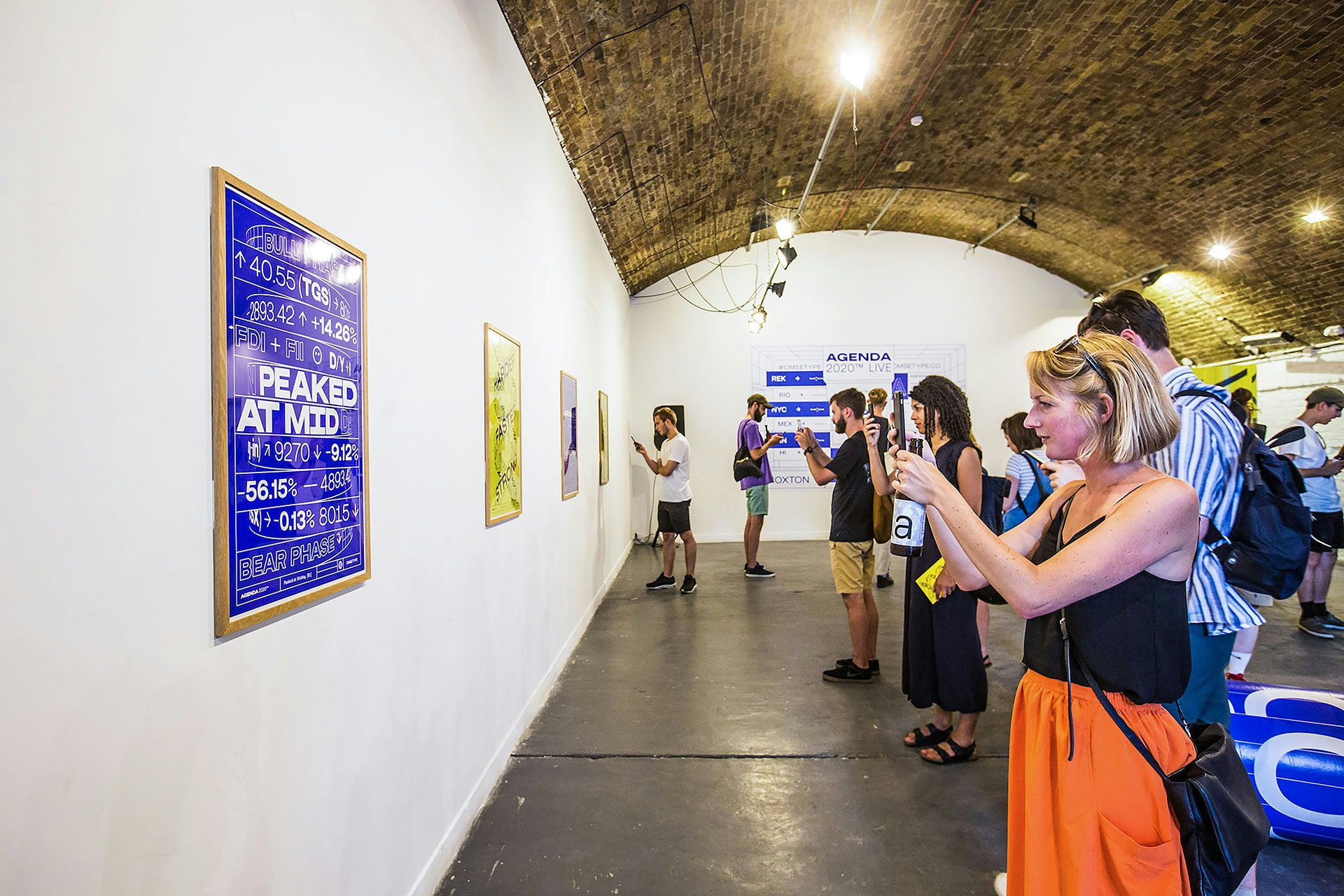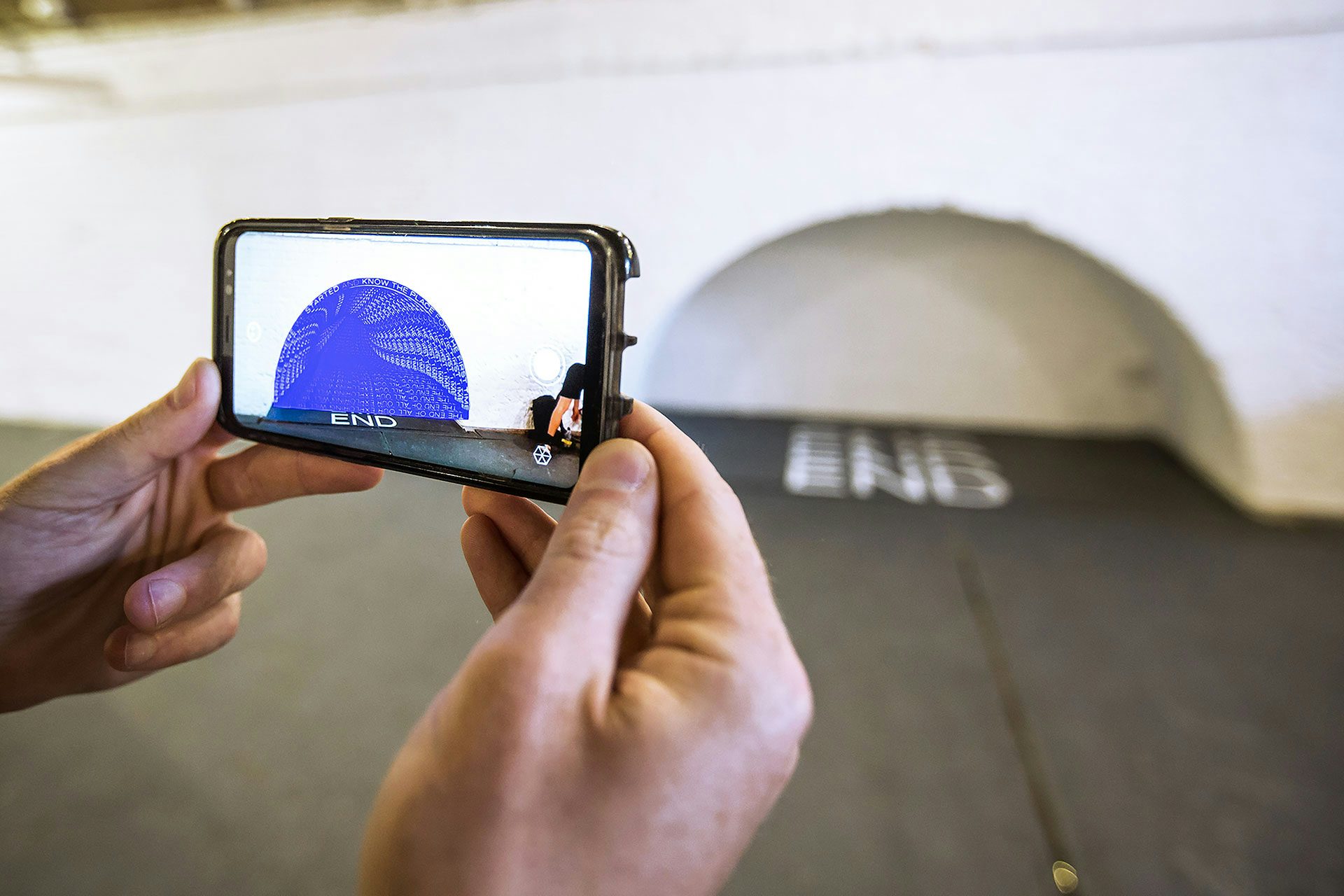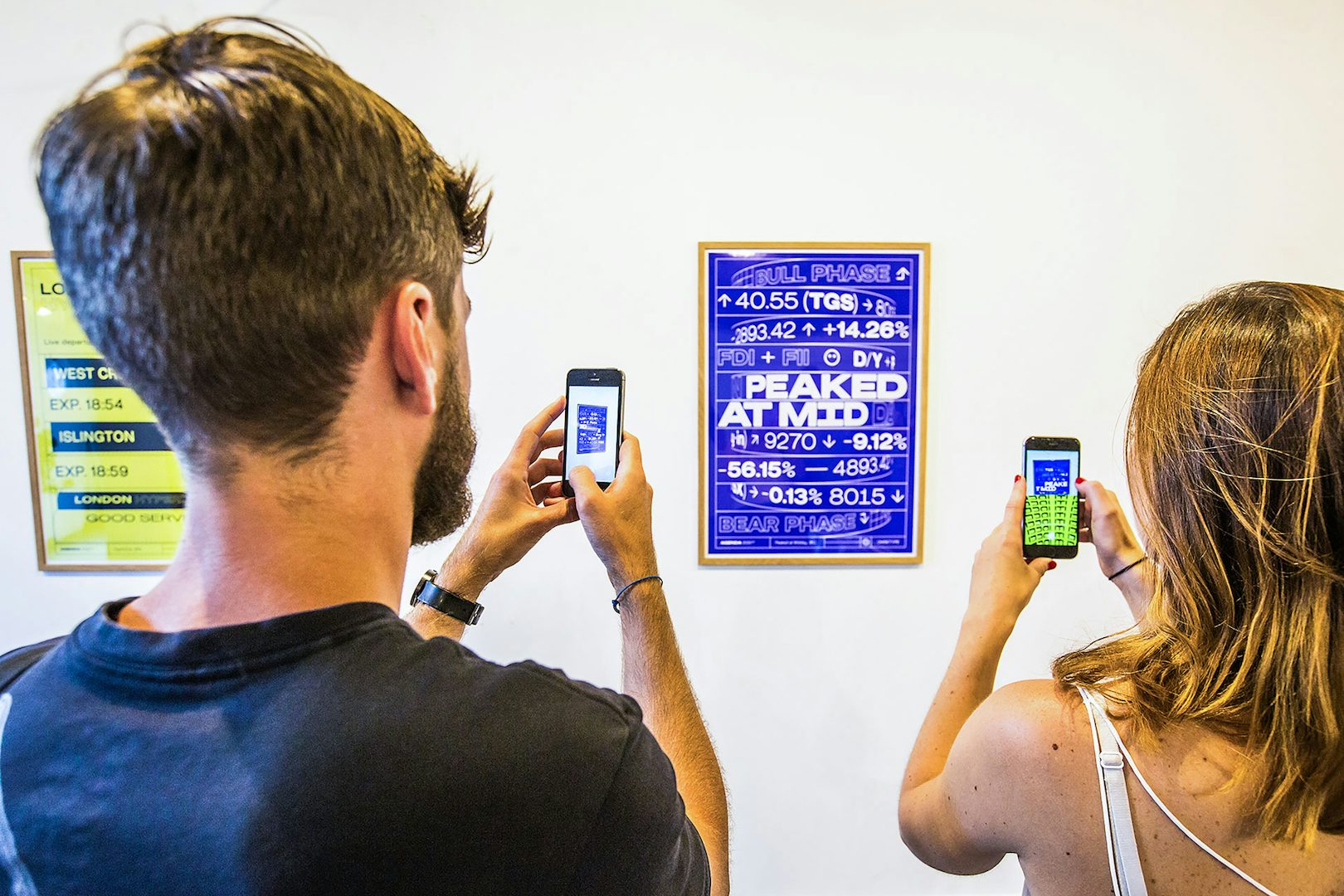Design studio OMSE on the future of type and AR graphics
London design studio OMSE was awarded Best in Book in our Annual this year for Agenda 2020 – an interactive exhibition exploring the graphic potential of AR. As part of our 2019 Annual coverage, we talk to co-founder James Kape about the show
It’s rare to see a self-initiated project take top prize in the Creative Review Annual, but our digital judges were unanimous in their praise for Agenda 2020 – an interactive exhibition created to promote London foundry OMSETYPE’s latest typeface, Gattica.
OMSETYPE is an offshoot of East London design consultancy OMSE, which was founded by Australian creatives James Kape and Briton Smith in 2016. The pair met at a music events company in Sydney, and went on to work for larger agencies before moving to London and founding their own practice. (Smith was a Senior Designer at Interbrand in Sydney, and worked on branding projects with London consultancy Ragged Edge, while Kape spent four years at Wolff Olins after a stint at New York studio NR2154.)
“We had the ambition to start a studio years ago in Sydney, but we wanted to gain more experience in different areas. When we both ended up in London a few years later, we decided to make the leap and start OMSE,” Kape tells CR. OMSE has since worked on projects for Itsu and artisan chocolate maker Hill St and has recently been working on branding for the Church of St John in Hackney.

OMSETYPE grew out of Kape and Smith’s custom work for clients. “We had been designing custom typefaces for a number of years,” explains Kape. “As this increasingly became part of our design process … we wanted to develop this further and focus on commercial releases in addition to custom typefaces.”
The typeface itself – which OMSE describes as “clean and futuristic” – was conceived as a way to experiment with another emerging tech, variable fonts. This tech allows designers using Gattica to select the width and weight of the font using a sliding scale instead of predefined variations – a feature that Kape says gives them “more precise control and greater customisation”.
With Agenda 2020, Kape says the studio wanted to explore the creative potential of AR – and how the tech might enable us to interact with graphics in the real world, from packaging to posters. “When we create a typeface for commercial release, we always create a graphic identity for the typeface and sometimes have a launch event to celebrate its release,” he explains. “For Gattica, we wanted to do this in a forward-thinking way and incorporate technology to reflect the design and aesthetic of the typeface. The exhibition was initially conceived as a ‘silent disco’ but for graphics – an exhibition where guests could only experience the exhibits digitally using their phones and AR.”

Once OMSE had settled on a concept for the exhibition, the team created some tests in software programme Unity. “After a lot of trial and error, we started to firm up on a couple of ideas which ended up driving the aesthetic for the rest of the exhibition,” explains Kape. The studio then set about designing graphics for the show and building a custom mobile app for visitors.
“We designed each visual through creating perspective drawings on paper or in Illustrator. These drawings were then created in Cinema 4D and finally imported into Unity. The app downloads all these experiences to your phone and comes to life when your camera recognises a specific visual or target,” he says.
The team worked on Agenda2020 for around six months in between client projects: “The main challenge was developing a consistent visual aesthetic that worked in print and also in AR,” adds Kape. “This took longer than expected and we ended up having to postpone the exhibition because we weren’t ready in time creating all the pieces.” Another challenge was creating designs that would live in a virtual 3D space: “This was a new experience for us and required exploring typography in space and in motion,” he says.
The project proved successful for OMSE: the agency doubled its Instagram following and reached 49,000 people with posts showcasing designs from the event. The Agenda 2020 website allows users to view designs along with footage from the exhibition, extending the life of the project beyond the event at Hoxton Arches. The studio doesn’t have any further AR projects in the works just yet, but Kape says it’s something the team is keen to do and is actively exploring.
The project has proved a valuable learning experience for OMSE: “[It] gave us a license to experiment in ways which we wouldn’t have been able to do on before on client briefs. And it’s changed the way we think about visual communication and how we might experience it in the future,” says Kape.
The team has also learned the importance of having a clear aim and desired outcome when experimenting with new technologies – particularly if there’s a hard deadline to meet. “It’s helpful to have a goal in mind as we spent a lot of time experimenting before arriving at an approach we were happy with,” says Kape. “[With Agenda2020], we pursued a lot of different avenues that ended up being dead ends as there was no roadmap on how to approach a project like this.”

It’s rare to see such a playful approach to promoting a typeface. As well as being an innovative showcase of OMSETYPE’s work, the project presents an interesting example of how AR can be used to create engaging graphic displays, whether in exhibitions or public spaces.
“AR will allow us to explore design in a way which couldn’t be experienced before, in the same way the internet and websites changed the way we think about and experience typography and graphic design…. Once the remaining barriers to adoption are overcome, we would expect that AR will be incorporated into all kinds of applications, from packaging and advertising to signage and web design and probably all kinds of other applications we struggle to imagine now,” says Kape. “We hope the exhibition will help inspire more exploration of 3D typography and experimentation with how it could be applied in a practical setting,” he adds.




